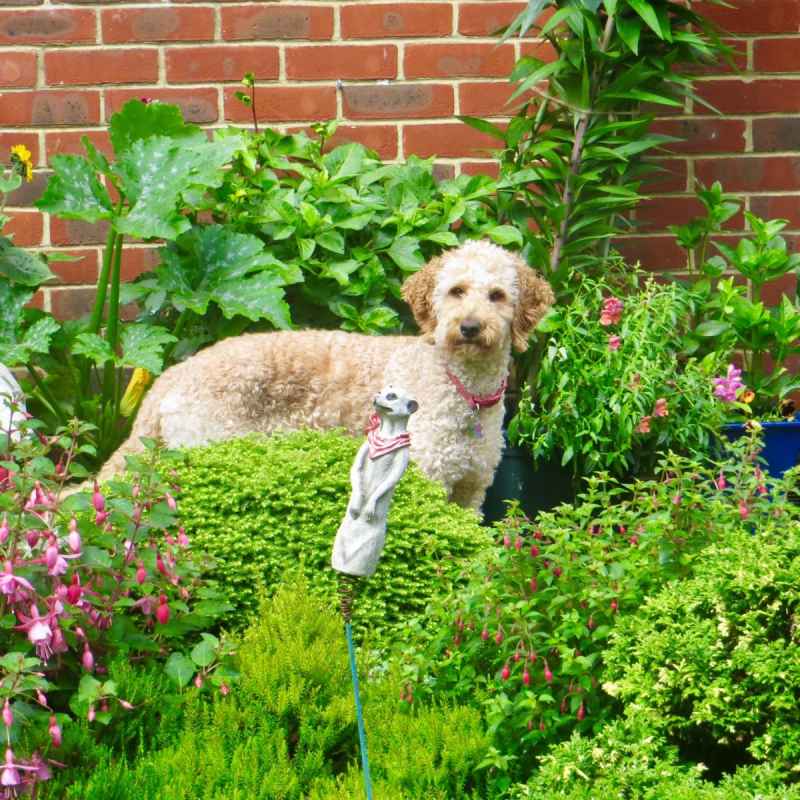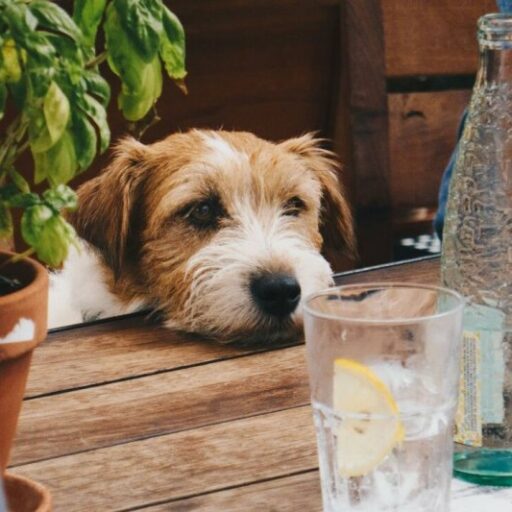Best Dog Friendly Flowers – Poinsettias, hollyhocks, conifers and other seasonal plants, good for decorating the house or giving interesting gifts, are part of the holidays like cookies and stockings. But these and other plants commonly used during the holiday season pose little risk to curious animals who may pick at the leaves, flowers or drink standing water. And while we don’t want to scare you away from using live plants to cover your paths, it’s good to know which pet-friendly plants are suitable for homes with flowering friends and which ones to avoid brother.
We asked the plant experts at The Sill for their advice on pet-friendly plants to replace some of the popular products used throughout the season. These featured plants still bring the color and cheer that only live plants can provide to the long, dark days of winter without putting your pets at risk. Here is a quick explanation to share and explore the deeper reasons and reasons for each plant. Shop Sill’s entire collection of pet-friendly plants and learn more about our pet-friendly subscription box.
Best Dog Friendly Flowers

So why are these plants safe for your pets? Here are the whys and wherefores of switching to pet-friendly plants and some tips on caring for new pet-friendly plants. (Note – to order pet supplies directly from The Sill, just click on the name of any plant.)
10 Of The Safest Flowers For Dogs You Can Buy Or Grow
Poinsettia (Euphorbia pulcherrima) has a milky, irritating juice, which if swallowed, can irritate the mouth and stomach and sometimes cause vomiting. While it is not the most poisonous plant threat to animals, it is not the greatest either! There are some good options.
Full of bright pink or red flowers around Christmas. Although it can cause irritation if ingested in large quantities, it generally does not pose a health threat to curious animals.
This hardy epiphyte needs bright light and warm temperatures to really do its job. A sunny window should be far enough away from the heating source. Do not fill with water; Check if it needs water by lifting the pot. If it’s easy, submit.
) Tree oil and tree needles can cause abdominal pain in animals if ingested. What is more important is the water in the tree which may contain oils and chemicals that are washed away to grow the plant. Other conifers, including spruce and fir, pose a similar risk.
Plants And Dogs
) when grown indoors, it’s a fast growing plant, not less than 1 foot per year until it reaches a height of about 10 feet. We’re not saying it’s a one-to-one replacement, but it’s a good option for homes with pets that are problematic.
The big palm has a reputation as a plant with a certain climate. It may take a few tries before finding the perfect spot, but this plant usually does well in a bright spot with plenty of light. Give plenty of water and keep a spray bottle nearby to mist them several times a week.
) contains licorice and other harmful substances, which cause vomiting, diarrhea, loss of appetite and abdominal pain, fatigue and tremors in cats and dogs. The bulb of the plant contains more poison than the flowers and stem.

The moth orchid (Phalaenopsis) has the same soft flowers, sweet color and charm of Victoria’s amaryllis without the potential side effects if animals eat them. Plus, they can bloom for months and come in so many different colors that there’s likely to be one to match any room in the house.
The Best Garden Surfaces For Dogs & How To Make A Dog-friendly Garden
Moth orchids love bright, direct light. Another window faces east st; West or south light is good as long as it is direct. When the bark or moss is dry to the touch and the pot is bright, water the orchid well (until the water passes through the drainage hole in the bottom of the pot).
) has soft leaves that usually prevent most animals from eating too much to cause serious damage. However, eating too much of the leaves or buds can cause stomach problems such as vomiting and diarrhoea.
It has beautiful bi-colored leaves which, while not claimed to be a ‘perfect’ alternative to Ilis, have attractive flowers which is what we go for here in the dark of winter when you just want beauty.
It is not the easiest apartment plant to care for, but you can do it with some techniques: provide medium to light, direct light; Water only when the top 1-2 inches of soil is dry; Provide high heat to keep the leaves clean – mist regularly or place on a tray of gravel. Relief!
15 Best Pet Friendly Plants
) poisonous to dogs and cats (for the whole plant). Eating a small amount of leaves can cause vomiting and diarrhea, weakness, difficulty walking, lethargy, shock or tremors, and loss of appetite. The long-term consequences can be serious.
The Peacock Tree (Calathea makoyana) has long, thick green leaves that are deep green with a deep blue color on the top and a deep blue underside. We like that it has the height, scale and strong color of azalea plants, but it is safe for animals and thrives indoors without care.
Say it once, twice, three times – this plant loves moisture. As moisture level 60% curly hair. Place from the source of heat in a bright place and place on a tray full of gravel. However, put the pots in the shower and run warm water for a soft shower. They will love you for it!

We sent your frequent questions about great houseplants to Paris Laliqueta, Community Partner + Director of Plant Education at The Sill. Here’s her advice to help you grow. Find more great information on The Sill Blog.
12 Tips For A Dog-friendly Garden
A: The Majestic Palm is a large, pet-friendly floor plant that can reach 8-10 feet tall in optimal indoor conditions.
A: Examples of pet-friendly plants that can also tolerate low light include Bird’s Nest Fern, Parlor Palm, Calathea and Peperomia.
A: The plant with the largest non-toxic flowers is the Phalaenopsis orchid. Other non-toxic plants such as Peperomia or Calathea can grow indoors in good conditions, even if they are sold as plants instead of flowers.
A: Holiday cacti (Schlumrgera) are pet-friendly and a great non-toxic alternative to holiday decorations. Calatheas are also a great choice because of their beautiful painted foliage, which can add a pop of color to any decor. Also, African violets, bromeliads and roses work in place of poinsettias.
Dog-safe Shade Perennials
A: Plants are poisonous to animals only when eaten. If there are poisonous plants in the house, make sure you only keep these plants safe by using things like wall/ceiling hangers, plant stands, etc. And if you must have a conifer tree, consider a smaller one to put outside. from the reach of animals.
It is important to remember that not all plants are equally poisonous to animals. The toxicity of the plant to animals that consume the leaves or flowers can vary from “may cause irritation” to more serious consequences, depending on the specific plant. But when it comes to our pets, a lot of caution is never a bad thing! Share everything about flowers in general. DIY tips, how to create simple arrangements and our experience in running a flower studio!
Our dogs and cats are family members. Like young children, they can be interested in almost anything under the sun. It can be our valuables, slippers or whatever you call it. They can jump, lick, grind, rub or even eat. Because the health of our furry friends is a priority, some pet parents may choose not to make floral arrangements. Don’t worry, not all flowers are harmful to your pets! If you want fresh flowers in your home, here are 5 pet-friendly flowers and some tips on how to protect your pets from poison.

Roses are generally harmless to our pets. However, if swallowed, it can cause mild stomach pain. Be careful with their breaks, as they can cause havoc if your curious friends burst or chew on them.
Creating A Dog Friendly Garden
The gerbera daisy is an interesting flower and an interesting pet that is abundant in Singapore. They come in different shapes and sizes and are associated with many jewelry and accessories. These flowers are harmless when consumed. However, since this is not part of your pet’s natural diet, it is best to keep it away from your friends.
These beautiful lights and sunshine can make anyone’s day so much better. The best thing is that there is nothing poisonous about these flowers. This is true for both humans and animals.
Orchids are a safe option to have around, there is not much to worry about even if they decide to take a bite from this delicate flower. However, the tree that needs protection from our animals. A tip is to dust the orchid leaves with cinnamon powder or cayenne pepper. This will help act as a deterrent to cats as they hate this smell and will leave the plant alone.
He is standing

